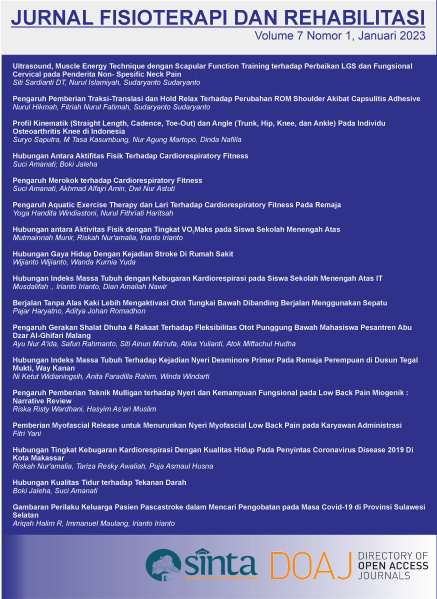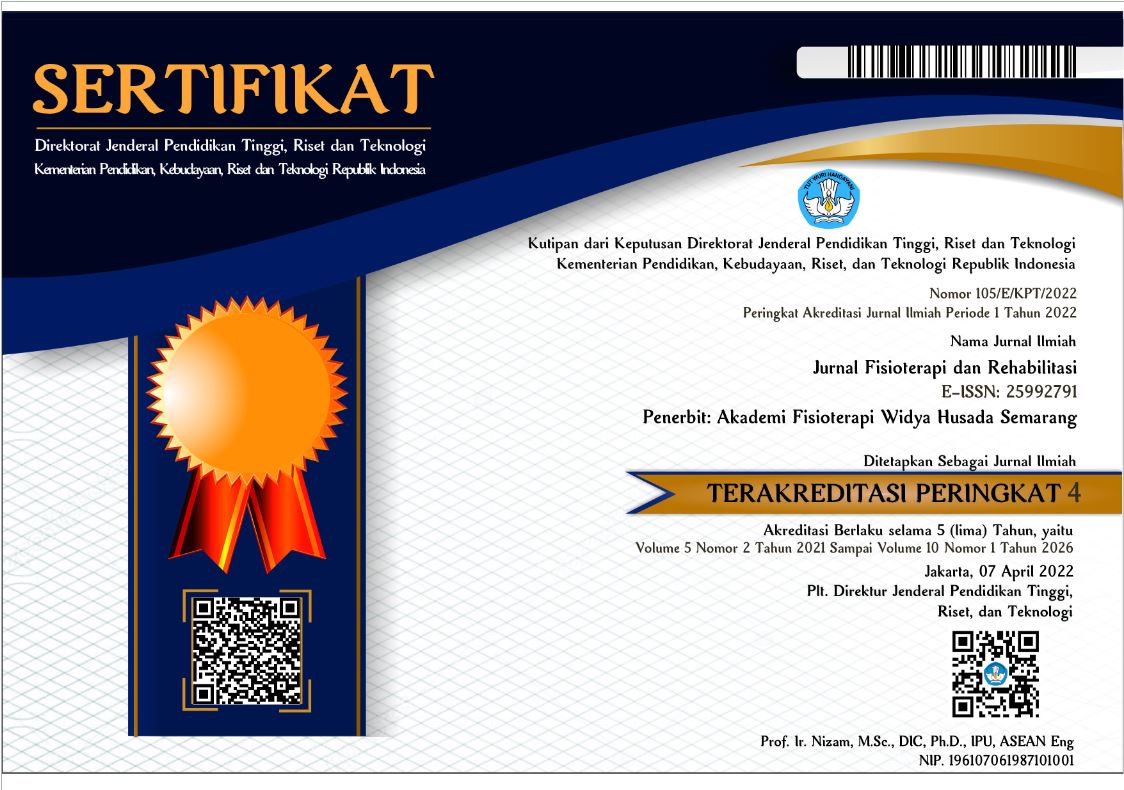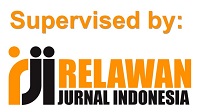Hubungan Antara Aktifitas Fisik Terhadap Cardiorespiratory Fitness
Effect Of Physical Activity On Cardiorespiratory Fitness
Abstract
Salah satu faktor yang dapat berhubungan dengan daya tahan tubuh adalah Aktivitas Fisik. Aktivitas fisik adalah setiap gerakan tubuh yang dilakukan untuk meningkatkan pengeluaran tenaga/energi dan pembakaran energi. Apabila seseorang melakukan latihan fisik atau olah raga selama 30 menit setiap hari atau minimal 3-5 hari dalam seminggu dapat dikatakan dalam tingkatan yang cukup (Karim,2018). Jenis penelitian yang digunakan adalah penelitian analitik, dengan desain studi Cross Sectional yang bertujuan untuk mengetahui hubungan Aktivitas Fisik dan status gizi dengan Cardiorespiratory fitness, yang dapat dilihat dari keuesioner IPAq (International Aktivitas Fisik Questionarre) yang telah diisi oleh partisipan dan juga dipadukan dengan tes daya tahan/endurance test Harvard StepTest, Hasil penelitian menunjukkan bahwa ada hubungan antara aktifitas fisik terhadap tingkat kebugaran partisipan yang disimpulkan dari uji hubungan untuk hasil score Harvard step test menggunakan uji korelasi Pearson didapatkan hasil 0,691. Artinya besar korelasi atau hubungan antar variabel aktifitas fisik dengan cardiorespiratory fitness yang menunjukkan bahwa ada hubungan antara aktifitas fisik terhadap tingkat kebugaran.
Downloads
References
Corbin C, Le Masurier G. (2014). Caerdiorespiratory Endurance. Dalam: Fitness for Life 6th Edition. USA: Human Kinetics, 2014: h.153-160
Karim, N. A., Onibala, F., & Kallo, V. (2018). Hubungan aktivitas fisik dengan derajat hipertensi pada pasien rawat jalan di wilayah kerja Puskesmas Tagulandang Kabupaten Sitaro. Jurnal Keperawatan, 6(1).
P2ptmKemkes,2019.http://p2ptm.kemkes.go.id/infographic-p2ptm/obesitas/apa-definisi-aktivitas-fisik

This work is licensed under a Creative Commons Attribution 4.0 International License.
The use of the article will be governed by the Creative Commons Attribution license as currently displayed on Creative Commons Attribution 4.0 International License.
Author’s Warranties
The author warrants that the article is original, written by stated author(s), has not been published before, contains no unlawful statements, does not infringe the rights of others, is subject to copyright that is vested exclusively in the author and free of any third party rights, and that any necessary written permissions to quote from other sources have been obtained by the author(s).
User Rights
JFR's spirit is to disseminate articles published are as free as possible. Under the Creative Commons license, JFR permits users to copy, distribute, display, and perform the work. Users will also need to attribute authors and JFR on distributing works in the journal.
Rights of Authors
Authors retain all their rights to the published works, such as (but not limited to) the following rights;
- Copyright and other proprietary rights relating to the article, such as patent rights,
- The right to use the substance of the article in own future works, including lectures and books,
- The right to reproduce the article for own purposes,
- The right to self-archive the article
Co-Authorship
If the article was jointly prepared by other authors, any authors submitting the manuscript warrants that he/she has been authorized by all co-authors to be agreed on this copyright and license notice (agreement) on their behalf, and agrees to inform his/her co-authors of the terms of this policy. JFR will not be held liable for anything that may arise due to the author(s) internal dispute. JFR will only communicate with the corresponding author.
Miscellaneous
JFR will publish the article (or have it published) in the journal if the article’s editorial process is successfully completed. JFR's editors may modify the article to a style of punctuation, spelling, capitalization, referencing and usage that deems appropriate. The author acknowledges that the article may be published so that it will be publicly accessible and such access will be free of charge for the readers as mentioned in point 3.












